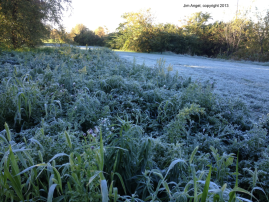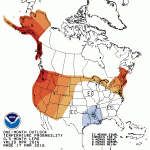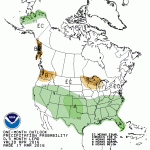 Too early to plant in Illinois? Here are a few things to consider. Yesterday I provided links to the soil temperatures in Illinois. Today I wanted to mention our last spring frost climatology available online.
Too early to plant in Illinois? Here are a few things to consider. Yesterday I provided links to the soil temperatures in Illinois. Today I wanted to mention our last spring frost climatology available online.
Quick introduction to frost:
Frost is the formation of thin ice crystals on the ground or other surfaces in the form of scales, needles, feathers, or fans. If a frost period is severe enough to end the growing season or delay its beginning, it is referred to as a “killing frost”.
Frost in both spring and fall can be a concern to farmers, landscapers, and gardeners. However, we usually do not directly measure frost at weather stations in Illinois. Sometimes observers may note the presence of frost in their comments on the forms. To get around the lack of direct observations, we use a temperature threshold of 32° for frost and 28° for a hard freeze. You can see the full suite of maps for both thresholds here.





